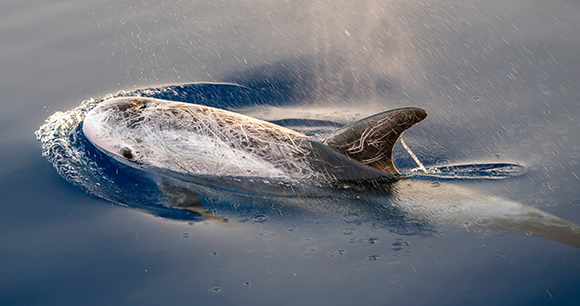On May 20, the Marine Mammal Protected Areas Task Force of the International Union for Conservation of Nature (IUCN) announced 46 new candidate Important Marine Mammal Areas (IMMAs) for the North West Atlantic Ocean and Wider Caribbean region. IMMAs are defined as “discrete portions of habitat, important to marine mammal species, that have the potential to be delineated and managed for conservation.” Expert identification of IMMAs makes it easier for governments, intergovernmental organizations, conservation groups, industry, and the general public to prioritize specific geographic areas when considering various conservation measures.

The task force’s announcement followed the 11th regional IMMA workshop in Yucatán, México, which AWI supported. Participants in the workshop included 57 scientists and observers from 14 countries who specialize in marine mammals found in the waters of the North West Atlantic Ocean and Wider Caribbean region. At the opening of the workshop, AWI’s Susan Millward and Georgia Hancock provided virtual words of welcome and support for the work of the task force.
Stretching from the tip of southern Labrador in Canada to Venezuela, the North West Atlantic Ocean and Wider Caribbean region encompasses more than a quarter of the Atlantic Ocean. This region is home to populations of both feeding and breeding humpback whales, "endangered blue whales, and vulnerable sperm whales; Risso’s, Fraser’s, and common bottlenose dolphins; dwarf sperm whales; and many species of deep-diving beaked whales. Some marine mammals, such as critically endangered North Atlantic right whales and Rice’s whales, are located solely within this region.
Workshop attendees narrowed down the proposals from a list of 235 preliminary areas of interest based on existing Marine Protected Areas, US waters recognized as “Biologically Important Areas,” and areas deemed ecologically or biologically significant under the Convention on Biological Diversity, as well as 57 submissions from marine mammal experts. In addition to identifying 46 candidate IMMAs from this list, the attendees highlighted seven areas of interest for future work and potential candidate IMMA identification. This forward-looking approach is useful because it recognizes locations where experts feel more marine mammal research is needed.
The IMMA Secretariat is now considering candidate IMMA proposals such as the True’s Beaked Whale Aggregation Area, the Terminos Lagoon and St. Vincent-Bequia Channel “Rat Porpoise” Alley, and the Southern Labrador Pack Ice Whelping Area (which, for the first time, would cover polar bears, harp seals, and hooded seals), as well as the first candidate IMMA proposal for Rice’s whale habitat. The final decision on whether these candidates will be designated as full IMMAs is expected later in the year.
The task force’s global IMMA effort began in 2016 and has already identified 280 IMMAs in the South Pacific, Southern, Indian, Southwest Atlantic, and Northeast Atlantic Oceans and the Mediterranean, Black, and Caspian Seas. They can be viewed online via the IMMA e-Atlas on the task force’s website. AWI has supported the creation of IMMAs since the outset and maintains close professional ties with many members of the task force, which includes scientific representatives from approximately 30 countries.